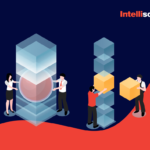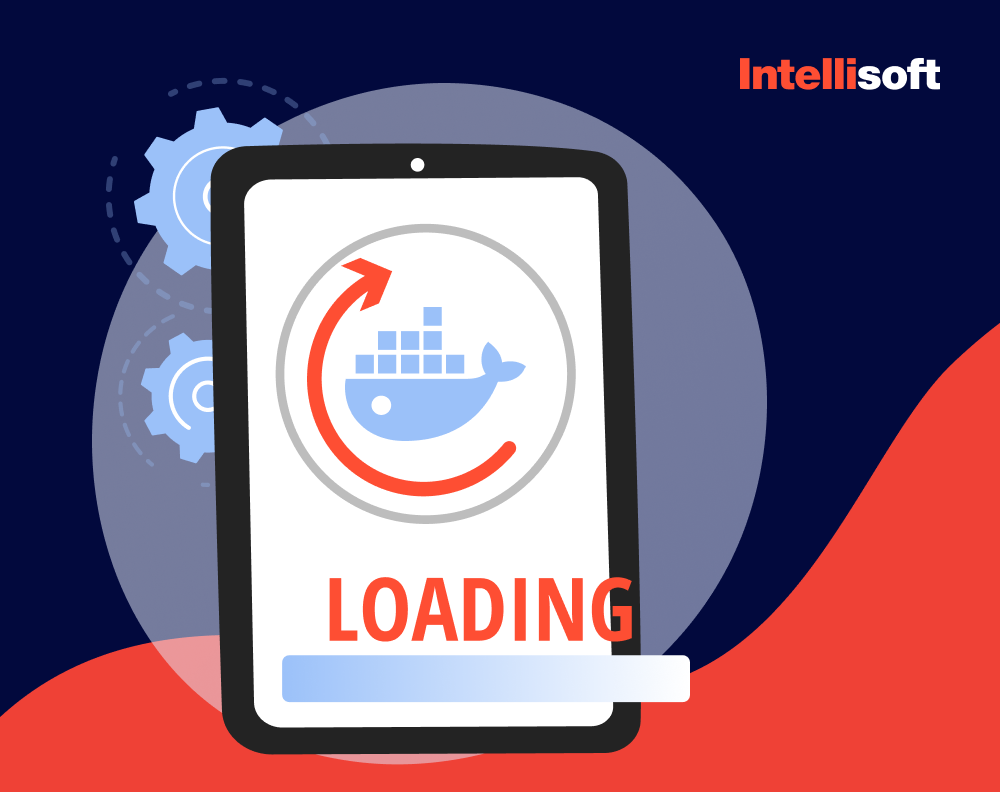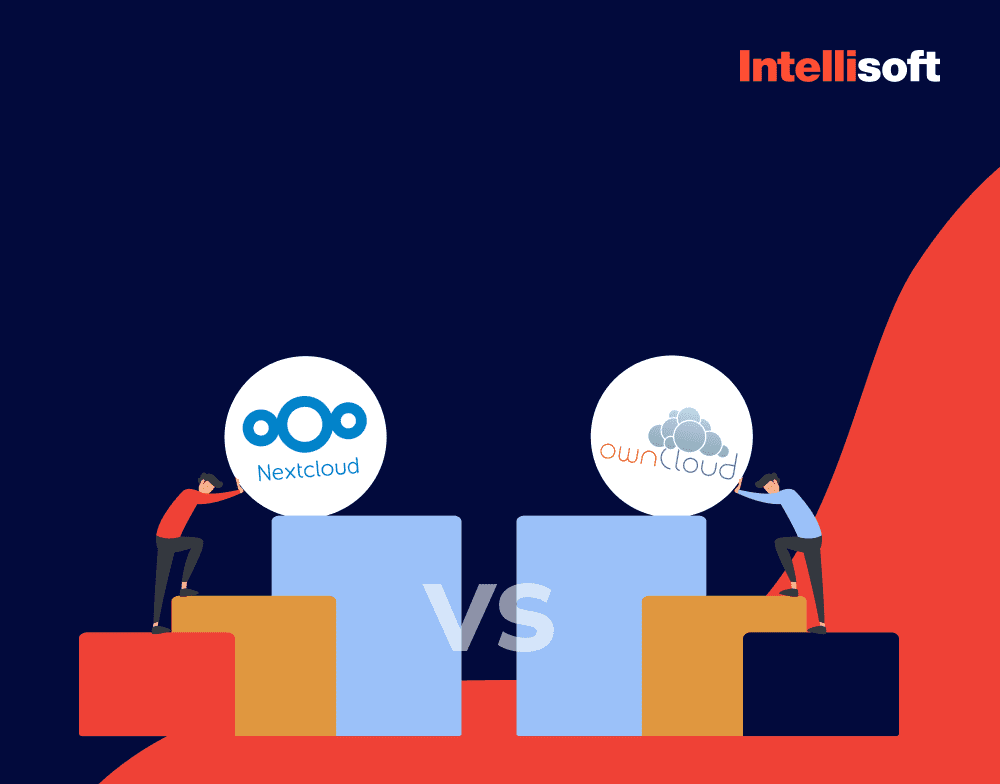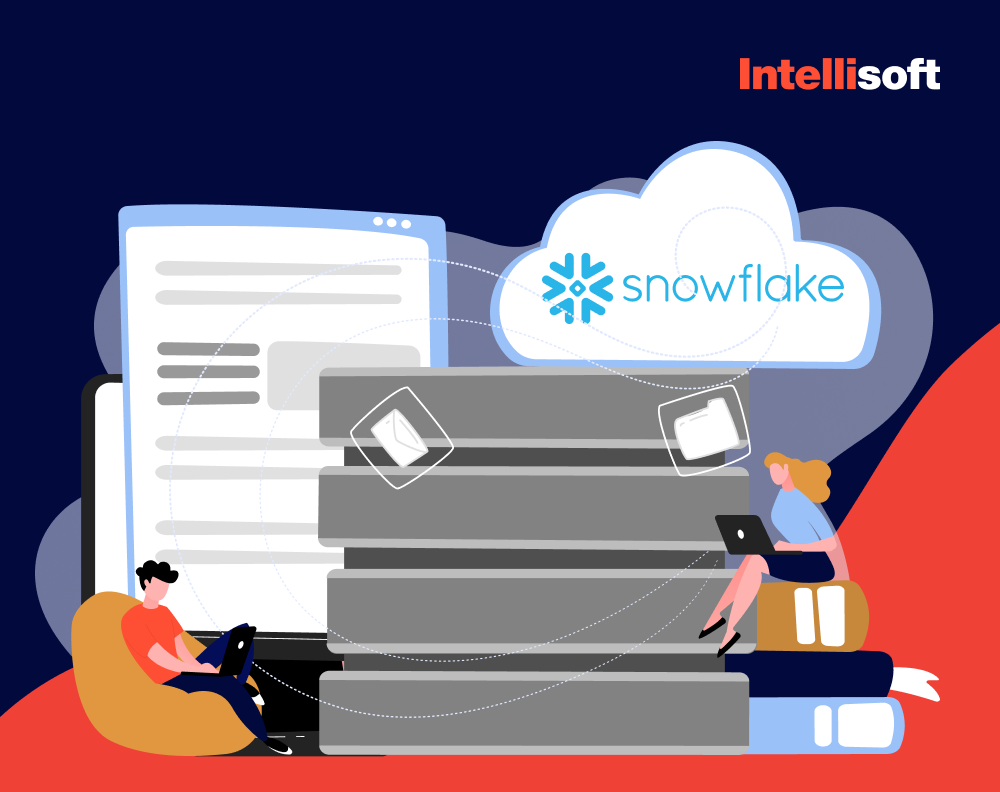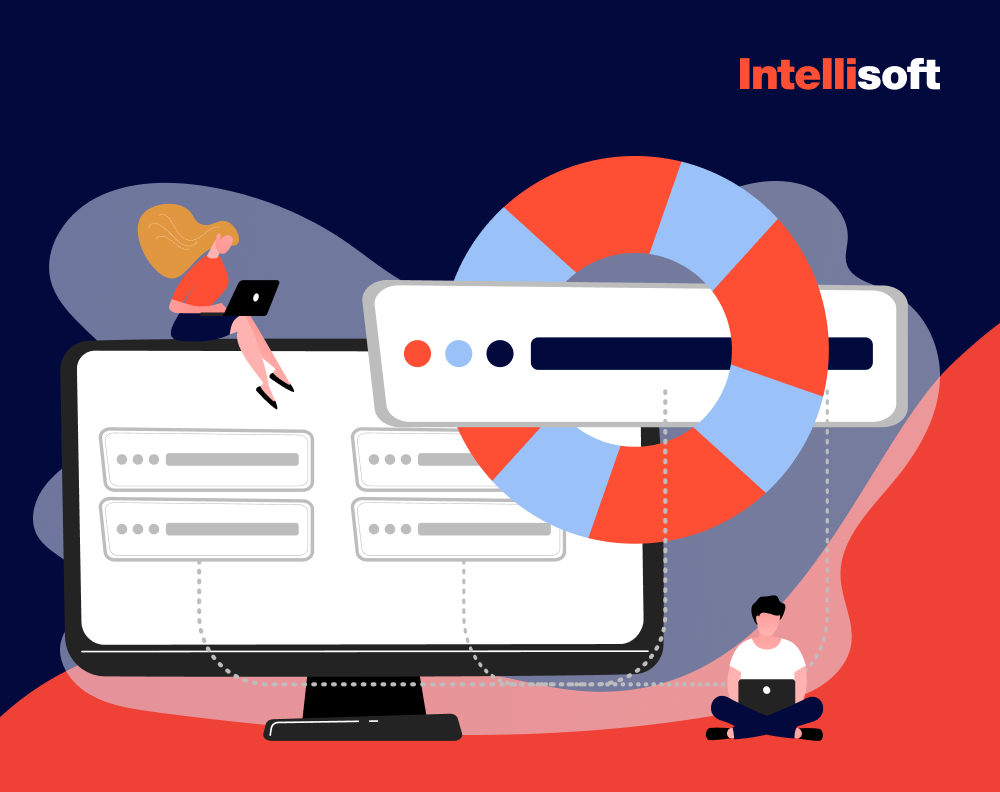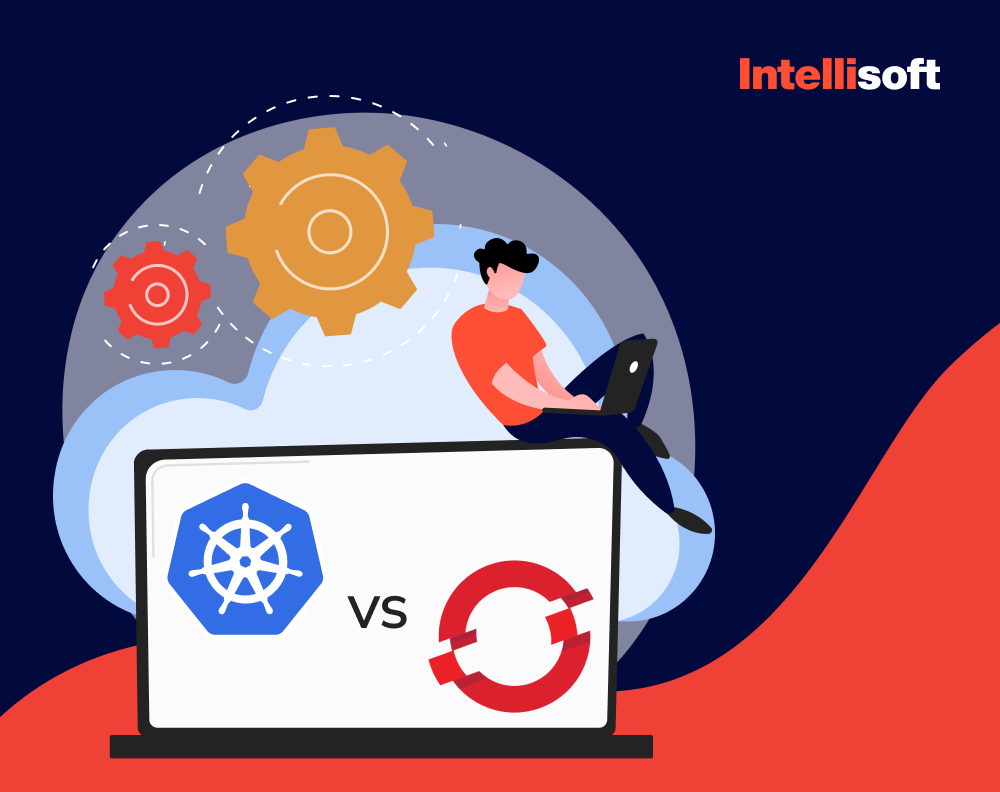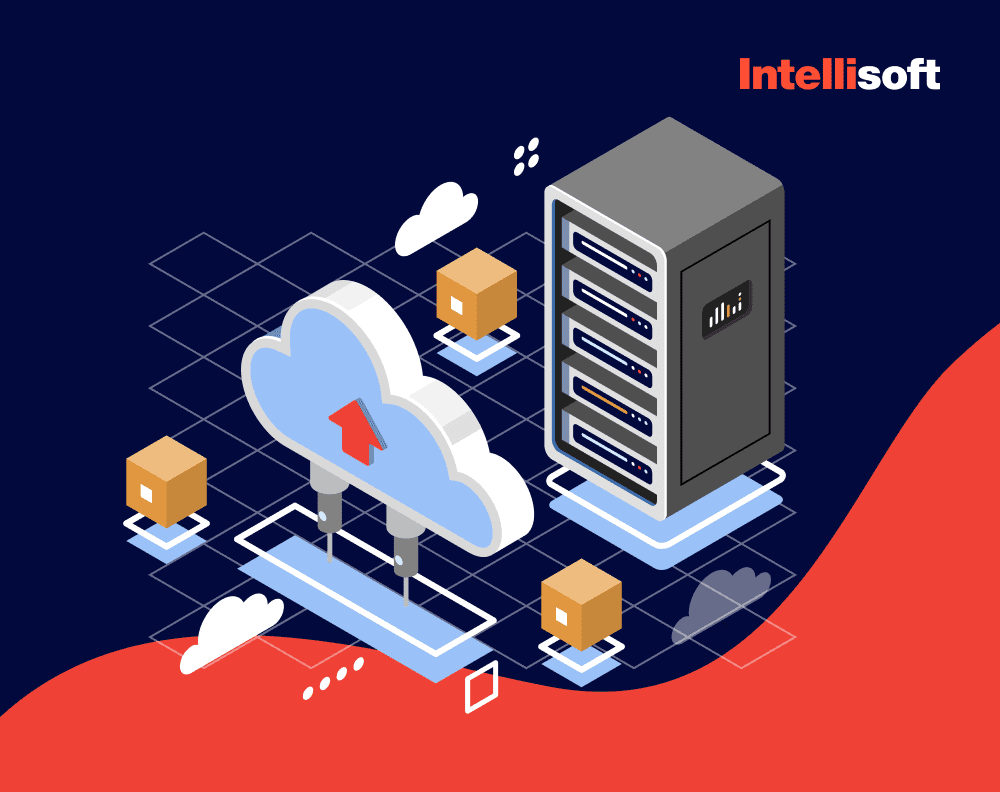Ready To Move To Microservise Architecture?
Have you ever ordered a pizza with your friends or family and had to decide which toppings to get? Some people like pepperoni, while others prefer mushrooms or olives. It can be tough to please everyone, right? The same thing can happen with software development. When you’re building an application, there are many different components to consider, and each may have additional requirements or dependencies.
That’s where Docker comes in. Docker is a platform that makes it easy to design, deploy, and run applications using containers. A container is like a lightweight virtual machine (VM) that includes everything your application needs to run, from the code and libraries to dependencies. Think of Docker as a pizza box that lets you package up all the ingredients you need for your application and deliver them together.
In today’s fast-paced digital world, efficient, scalable software development is crucial. As developers seek to create applications that can quickly adapt to changing user demands and technological advancements, the need for more flexible and maintainable architectures has become apparent. According to a recent survey, more than 85% of large companies now use microservices architecture for their application development. Docker and Kubernetes are emerging as game-changers in modern software development, implementing microservices and containerization concepts.
At IntelliSoft, our software development experts have experience leveraging Docker and microservices to deliver exceptional results. Our extensive domain background uniquely positions us to share valuable insights and best practices. Our proven track record includes the ZyLAB eDiscovery project, where we successfully executed a legacy platform migration utilizing Docker for microservices containerization.
In this article, we’ll explore the use of the Docker platform and microservices and how these two technologies are changing the game for modern application development.
Table of Contents
Microservices Basics: Building Blocks for Modern Applications
A monolithic architecture is a conventional choice for the software development process, where developers build the entire product as a single entity using the waterfall development method. This approach, however, frequently leads to issues with size, complexity, and scalability. Thankfully, microservices architecture provides a solution by breaking down an application into smaller, independent units that communicate with each other via REST APIs.
Each function is developed as a separate service, allowing them to operate independently without affecting other services. This approach offers increased flexibility, scalability, and resilience, making it ideal for meeting modern application development needs.
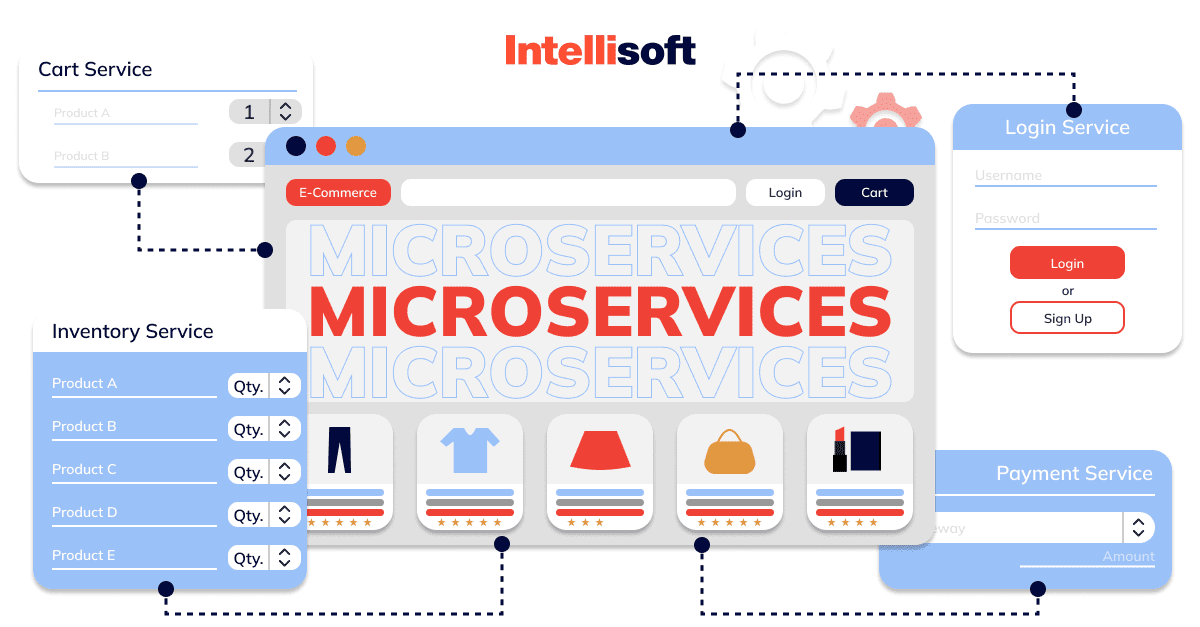
Characteristics of Microservices
Microservices have several key characteristics that set them apart from traditional monolithic architectures:
- Independence and modularity: Each microservice is self-contained, ensuring you can develop, test, and deploy it independently.
- Decentralized data management: Microservices promote a decentralized approach to data management, with each service owning its data and exposing it through APIs.
- Fault tolerance and resilience: Developers design microservices to be fault-tolerant, meaning that if one service fails, the rest of the application can continue functioning without disruption.
- Scalability and elasticity: By breaking applications into smaller components, microservices enable teams to scale individual services up or down based on demand, improving overall application performance.
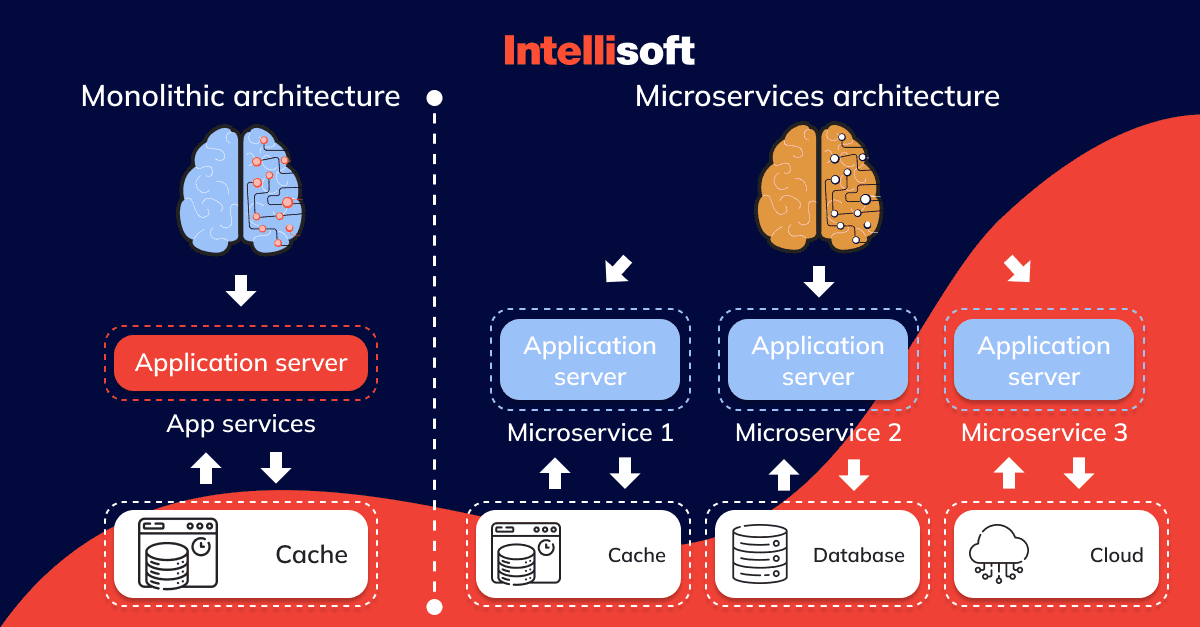
By embracing these characteristics, microservices provide a more versatile and resilient framework for modern software development.
Design Principles for Microservices
When designing microservices, there are several fundamental principles to keep in mind:
- Domain-Driven Design (DDD): DDD is an approach that focuses on defining clear boundaries between different parts of an application, ensuring that each microservice remains concentrated in a specific domain or responsibility.
- Service granularity and cohesion: Developers should strive to create small and cohesive services, ensuring each microservice is responsible for a single, well-defined functionality.
- API Gateway pattern: The API Gateway pattern consolidates API requests and routes them to the appropriate microservices, simplifying communication between services and clients.
- Event-driven architecture and data synchronization: An event-driven architecture enables microservices to communicate asynchronously through events, reducing the need for tight coupling and improving overall application performance.
Now that we’ve established microservices as the cornerstone of modern application development, it’s time to introduce their perfect partner – containers.
What Are Containers?
Containers are a vital component of microservices architecture, offering a notable use case for developers. Simply put, a microservice container is a standardized unit of software that can isolate an application from the underlying infrastructure by bundling all of its dependencies and required resources into a single package. This approach makes deploying and managing applications across different environments easier without worrying about compatibility issues or configuration challenges.
One of the main advantages of containers is their ability to virtualize software layers above the operating system (OS) level. Unlike virtual machines, which virtualize hardware layers, containers can run multiple applications on a single OS without requiring a separate operating system instance for each application. It increases efficiency, provides resource utilization, faster deployment times, and effortless scalability.
Since containers package all dependencies and required resources, they can be easily deployed and run on any system that supports containerization. Containers also offer a high level of portability, making it easy to move applications from one environment to another. Such an approach allows developers to build genuinely agnostic applications to the underlying infrastructure, making scaling and managing applications easier.
Why Should You Always Run Microservices Apps in Containers?
In recent years, microservices have emerged as a game-changing platform underpinning countless applications in the coming decade. Their inherent agility and adaptability make them the perfect choice for businesses striving to stay ahead of the curve. But the question remains: what is the best execution environment for your microservices applications?
The answer is simple: application containers.
Let’s examine why containers are the ultimate choice for running a microservices architecture, unlocking efficiency, flexibility, and performance.
Unmatched Efficiency with Refined Execution Environments
While virtual machines (VMs) offer a convenient way to partition execution environments, they come at a steep cost because each VM requires its operating system. Containers isolate execution at the OS level, resulting in a single operating system instance supporting multiple containers. This approach reduces overhead and frees up valuable processing power for your application components.
In essence, containers are far more efficient for microservices architecture than VMs.
Cohabitation Made Easy with Better Isolation
Containers enable multiple application components to coexist within a single VM environment thanks to their ability to provide separate execution environments. With Linux control groups (cgroups), each application code set gets its private domain, ensuring they don’t interfere with each other’s operation.
As a result, you get more application processing from a given piece of hardware, maximizing utilization levels for all server resources.
Lightning-fast Initialization and Execution
Containers are the epitome of agility. They are much lighter and more compact than VMs, allowing them to start in seconds or milliseconds. In contrast, VMs may take minutes to boot up, which is not ideal for microservices-based applications that typically experience highly erratic workloads.
Looking For Back-end Developers?
The rapid instantiation of containers makes them the perfect match for the unpredictable nature of microservices, enhancing user satisfaction and boosting the performance of revenue-generating applications.
Unparalleled Flexibility with Container Management Systems
Container management systems offer unmatched flexibility and control over your microservices environment. You can use a container orchestration system like Kubernetes to ensure redundancy and resiliency in your microservices architecture. It allows you to implement policies for container placement, preventing colocated containers from defeating the purpose of redundancy.
While microservices architecture does not dictate the use of containers, their unparalleled efficiency, flexibility, and performance make them the best choice. By embracing container technology, you’ll achieve the following:
- Higher server utilization rates
- Faster response times
- Improved user satisfaction
It’s time to unleash the full potential of microservices by running them in containers – the ultimate foundation for your application architecture.
Now, it is time to introduce the cutting-edge containerization platform called Docker.
Why Use Docker?
Docker is an open-source platform that simplifies creating, deploying, and running applications within lightweight, portable containers. By encapsulating applications and their dependencies into containers, Docker ensures that applications run consistently across different environments, streamlining deployment and reducing the likelihood of environment-related issues.
Docker has become the go-to solution for developers and organizations seeking agility and efficiency in their development pipelines by simplifying deployment complexities and ensuring application consistency across different platforms.
The Concept of Containerization
In essence, containerization is a lightweight virtualization that allows multiple isolated applications to run concurrently on a single host operating system. Containers share the host’s kernel but maintain their file system, libraries, and dependencies. It results in more efficient use of system resources and a faster startup time than in traditional virtual machines (VMs).
Related readings:
- Kubernetes VS Docker: Compare & Contrast Guide
- What Is Kubernetes And When to Use It: Key Trends in 2023
- Node JS Advantages and Use Cases: Is This Environment Right for You?
- Monolithic vs Microservices Architecture: Pros and Cons
Docker Architecture
Docker’s core components include the Docker Engine, a runtime environment for building and running containers, and Docker Hub, a cloud-based service for sharing and distributing container images. Docker employs a client-server architecture, with the Docker client communicating with the Docker daemon, which is responsible for building, running, and managing containers.
The image below demonstrates an example of Docker container architecture.
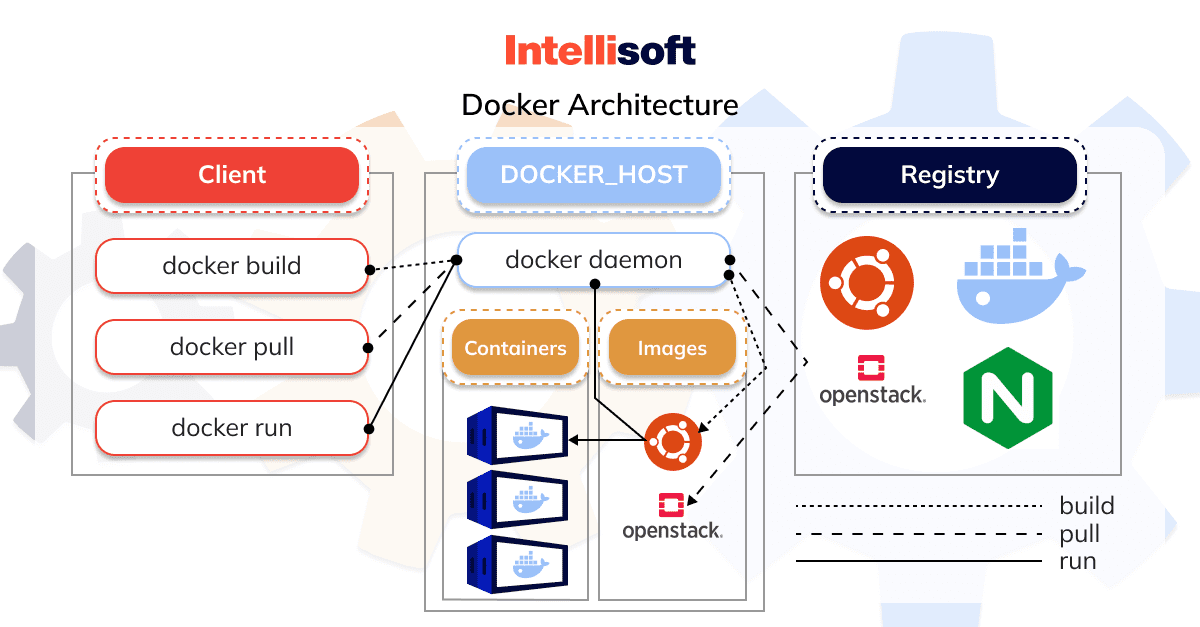
Docker Engine
The Docker Engine is the heart and soul of the Docker platform, responsible for creating, managing, and running containers. It consists of several key elements, including the Docker daemon, which manages containers and images, and the Docker CLI, which enables developers to interact with the Docker daemon through a command-line interface.
Docker Images
Docker images are the building blocks of Docker containers, providing a snapshot of an application and its dependencies at a specific point in time. Docker images can be stored and shared using Docker registries, enabling development teams to collaborate more effectively and streamline their deployment processes. Developers can create custom Docker images using a Dockerfile, which outlines the steps required to build the image, such as specifying a base image, adding files, and configuring environment variables.
Docker Containers
Docker containers are the runtime instances of Docker images, providing an isolated environment where applications can run. Each container is based on a specific image and includes all the dependencies required to run the application, ensuring a consistent experience across different environments. You can manage Docker containers using the Docker CLI or various APIs, enabling developers to start, stop, and monitor containers as needed.
Docker Registries
Docker registries are centralized repositories that store and distribute Docker images. Registries can be public or private, depending on the desired level of access control. The most well-known public registry is Docker Hub, which provides a vast library of pre-built images for developers to use as a starting point. The cloud or on-premises hardware can host private registries offering development teams more significant control over image distribution and access management.
Docker Benefits for Microservices
Docker has significantly altered the way developers approach application deployment and management. Let’s look at some key advantages Docker brings to modern software development.
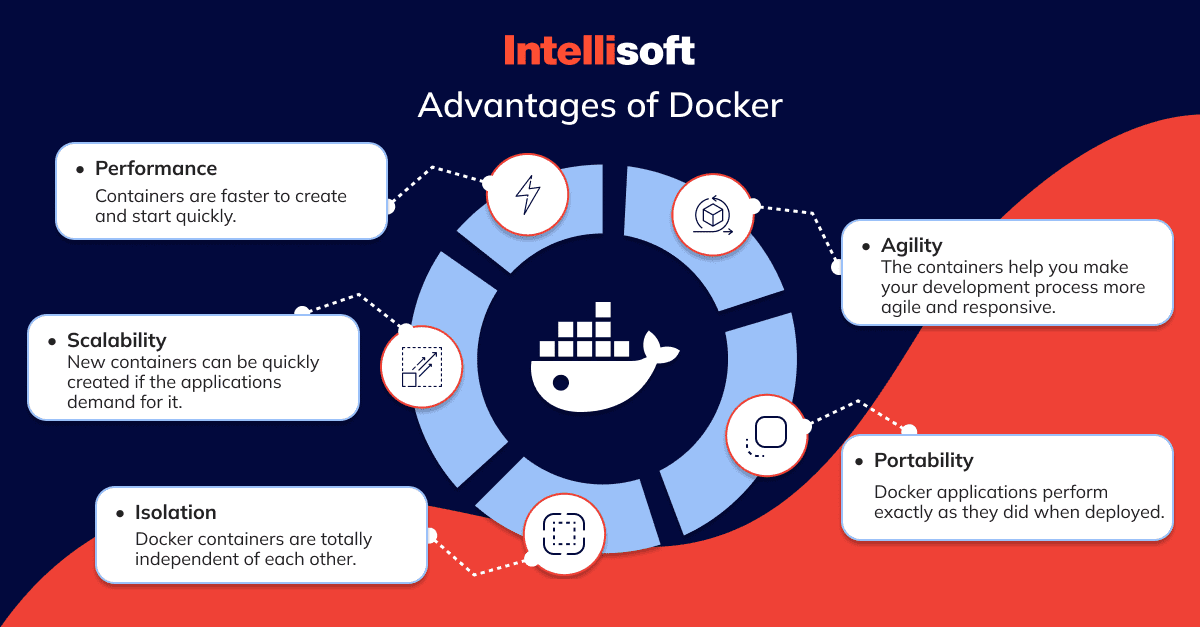
Simplified Deployment
Among the numerous benefits of using Docker for microservices, one aspect is vital: the remarkable ease of application deployment. Docker eliminates the need for developers to configure and manage particular environments by consolidating each microservice and its associated dependencies into a singular container. This streamlined approach minimizes the potential for errors and guarantees a consistent experience across diverse platforms.
How Much Will Your Project Cost?
With Docker at the helm, deploying a microservice becomes astonishingly simple – it requires just a single command. This efficiency level is an undeniable attraction for development teams seeking to optimize their workflows and enhance productivity.
By embracing Docker for microservices, you can enjoy seamless deployment, effectively transforming your application lifecycle. No longer bogged down by the complexities of managing multiple environments, development teams can now focus on what truly matters: delivering innovative, high-quality software solutions that stand out in an increasingly competitive landscape.
Enhanced Scalability
Docker’s lightweight containers offer unparalleled ease when scaling individual microservices within an application. By confining each service to its container, Docker guarantees that development teams can allocate and manage resources independently, empowering them to scale services up or down in response to fluctuating demand. This level of adaptability is indispensable for modern applications, as it equips teams with the capacity to adjust to evolving user requirements while maintaining peak performance.
In an era where change is the only constant, the ability to scale microservices efficiently and effectively is paramount. Docker’s elegant containers provide development teams with a robust and flexible solution that simplifies the scaling process, enabling them to swiftly adapt to the dynamic landscape of modern software development.
Embracing Docker’s lightweight containers for microservices streamlines the scaling process and fosters innovation and adaptability among development teams.
Improved Isolation
One of the principal benefits of utilizing Docker for microservices lies in its exceptional isolation level. By enclosing each microservice and its associated dependencies within an individual container, Docker guarantees that services retain their independence from one another. This separation minimizes the chances of conflicts and fosters a more modular application structure. In the context of microservices, this isolation is especially crucial, as it empowers teams to develop, test, and deploy different services without jeopardizing the stability of the overarching application.
Docker’s isolation-focused approach to microservices revolutionizes how development teams build and maintain modern applications. By creating a self-contained environment for each microservice, Docker instills confidence in developers, granting them the freedom to innovate, experiment, and iterate without the constant concern of inadvertently impacting other parts of the application.
This enhanced isolation streamlines the development process and enables teams to work more efficiently. By providing a safeguard against unintended consequences, Docker’s encapsulation of microservices promotes a culture of fearless experimentation, allowing developers to push the boundaries of what’s possible and ultimately deliver applications that are more robust, reliable, and adaptable to change.
Faster Development and Testing
Docker’s containerization methodology significantly expedites the development and testing process by offering a uniform environment throughout various stages of the software development lifecycle. With Docker, development teams can craft containers that accurately emulate the production environment, ensuring that applications undergo rigorous testing under true-to-life conditions and mitigating the risk of environment-related complications. This consistency encourages adopting Continuous Integration and Continuous Deployment (CI/CD) practices, empowering teams to swiftly iterate on their applications and respond more effectively to user feedback.
By providing a consistent and easily reproducible environment, Docker allows developers to work more confidently, knowing that the conditions under which they are developing and testing mirror the production environment. This consistency enables teams to identify and resolve potential issues early in development, reducing the likelihood of unpleasant surprises when they deploy the application.
Moreover, Docker’s commitment to consistency paves the way for seamless collaboration among development, testing, and operations teams. By ensuring that each team works within the same environment, Docker eliminates the potential for misunderstandings or miscommunications arising from discrepancies between development, testing, and production environments. This cohesion fosters a more streamlined and efficient workflow, leading to higher-quality applications and faster time-to-market.
Better Productivity and Consistency
Containers guarantee consistency across numerous release and development cycles, providing a uniform environment for designing, building, testing, and deploying applications. Software engineers can adeptly examine and resolve any issues within the application, allocating more time to developing features rather than tackling defects. This standardized infrastructure permeates the pipeline, empowering all team members to thrive in a high-productivity setting.
Furthermore, containers facilitate committing changes to Docker images and maintaining version control. If upgrading a component disrupts the entire environment, reverting to a previous version is effortlessly achieved. The rapid replication of your application ensures redundancy and accelerates the overall development process.
Compatibility with Different Platforms
One of the many aspects your team will value with Docker is the unparalleled parity it offers. Regardless of the computer or server, Docker images maintain consistency, providing a seamless experience across the board. This method translates to a significant reduction in time spent setting up environments or wrestling with environment-specific challenges.
By ensuring that your production infrastructure remains dependable and easy to maintain, Docker serves as the unifying force that streamlines operations and empowers your team to focus on what truly matters: delivering exceptional software solutions. Also, Docker presents a portable and effortlessly-configurable codebase, fostering a smooth and collaborative experience for your team. With Docker by your side, efficient teamwork will become the hallmark of your development process, driving your team toward continued success.
Better Return on Investment (RoI)
In the business world, management decisions often revolve around striking the perfect balance between maximizing returns on investment and minimizing costs. This rule is particularly true when developing and launching a new product. Business people always welcome solutions that amplify profits while slashing expenses, promising long-term financial stability and consistent revenue generation.
Docker’s game-changing technology facilitates substantial savings by streamlining infrastructure resources. This transformative solution not only trims server costs but also reduces the labor associated with maintenance. By adopting Docker, your organization can harness the power of efficient resource utilization, enabling them to run applications with fewer resources while still maintaining top-tier performance.
Embracing Docker empowers developer teams to adopt a lean and efficient approach, aligning with management’s objectives of optimizing return on investment and cost savings. With Docker as a cornerstone, organizations can confidently navigate the competitive landscape, all while maximizing profits and minimizing costs—making it a proper win-win solution for developers and stakeholders.
Portability and Integration with Multi-Cloud Platforms
Docker’s remarkable portability is one of its most significant advantages, seamlessly integrating with major computing platforms such as Google Cloud Platform (GCP) and Amazon Web Services (AWS). This widespread support enables Docker containers to run effortlessly on an Amazon EC2 instance, Rackspace server, Google Compute Engine instance or even VirtualBox, provided that the host operating system is Docker-compatible.
Moreover, containers operating in diverse environments feature unparalleled portability, maintaining consistent functionality and performance across various platforms. Docker’s versatility doesn’t end there – it collaborates seamlessly with other providers, such as OpenStack or Nginx, and is compatible with multiple configuration managers like Ansible.
By embracing Docker and its incredible portability, developers can focus on delivering exceptional software solutions while enjoying the unmatched convenience of a truly portable tool.
Improved Security
In the modern era of technology, security remains a paramount concern. Hackers constantly update their approaches depending on the latest security measures and advancements, making security a critical focal point for software development. Docker addresses these concerns by meticulously segregating containers providing you with comprehensive control over traffic and management.
The fundamental isolation of Docker containers prevents them from accessing the processes of other containers, safeguarding your applications from potential breaches. As previously emphasized, each container operates with its own dedicated set of resources, which means that even if one container is compromised, the others remain unaffected and continue to run seamlessly.
With Docker, you can enjoy peace of mind with a secure and robust technology solution. By prioritizing container isolation and offering granular control, Docker empowers developers to confidently create cutting-edge applications while protecting their digital assets from the ever-present threat of malicious attacks.
As we can see, Docker offers many benefits for microservices, revolutionizing the way development teams approach application design and deployment. By providing a consistent environment, enhancing scalability, promoting isolation, and streamlining the development and testing process, Docker empowers teams to build robust, adaptable, and high-performing applications. In essence, Docker’s containerization approach catalyzes innovation, enabling development teams to excel in the competitive landscape of modern software development.
Managing Docker-Based Apps with Container Orchestration Systems
As organizations continue to embrace Docker and its benefits for microservices, the need for efficient management of containerized applications becomes crucial. Enter the world of container orchestration systems, which streamline containerized applications’ deployment, scaling, and management. Among these systems, Kubernetes stands out as a leading solution, providing powerful tools to orchestrate and maintain container-based environments. Let’s dig deeper into the fundamentals of the Kubernetes microservices tool and explore its role in managing Docker-based applications.
Introduction to Kubernetes
Kubernetes, a revolutionary open-source container orchestration platform, has emerged as a game-changer in containerized applications. With its keen focus on maintaining application performance and reliability, Kubernetes adeptly manages the distribution of containers across clusters of servers while preserving the application’s desired state. It expertly automates containerized applications’ deployment, scaling, and management, proving an indispensable asset for microservices-based systems.
What sets Kubernetes apart is its inherent microservices-based architecture. This design philosophy allows it to seamlessly integrate with microservices applications, making it a natural and complementary fit for managing such systems. By providing a robust and flexible infrastructure, Kubernetes empowers development teams to confidently build, deploy, and maintain complex applications, streamlining workflows and boosting efficiency. Through its powerful capabilities, Kubernetes has established itself as an essential tool in container orchestration and microservices management.
Docker-Kubernetes Integration
Docker and Kubernetes form a partnership, delivering a comprehensive and cohesive solution for deploying and managing microservices applications. Each platform excels in its domain: Docker masterfully handles the containerization of individual services. At the same time, Kubernetes expertly orchestrates the deployment and management of these containers, ensuring they run at the right time and on the most suitable servers. This seamless integration allows development teams to harness the strengths of both platforms to their full potential, paving the way for more efficient and resilient applications.
The synergistic relationship between Docker and Kubernetes empowers developers to build, test, and deploy applications more efficiently and flexibly. As Docker encapsulates each service within its container, Kubernetes orchestrates these containers, dynamically scaling them to meet fluctuating demands and maintain the desired application state. This collaborative approach streamlines the development process, simplifies management, and reduces the risk of environment-related issues. Consequently, development teams can confidently focus on delivering high-quality applications that are adaptable, robust, and responsive to the ever-evolving needs of users.
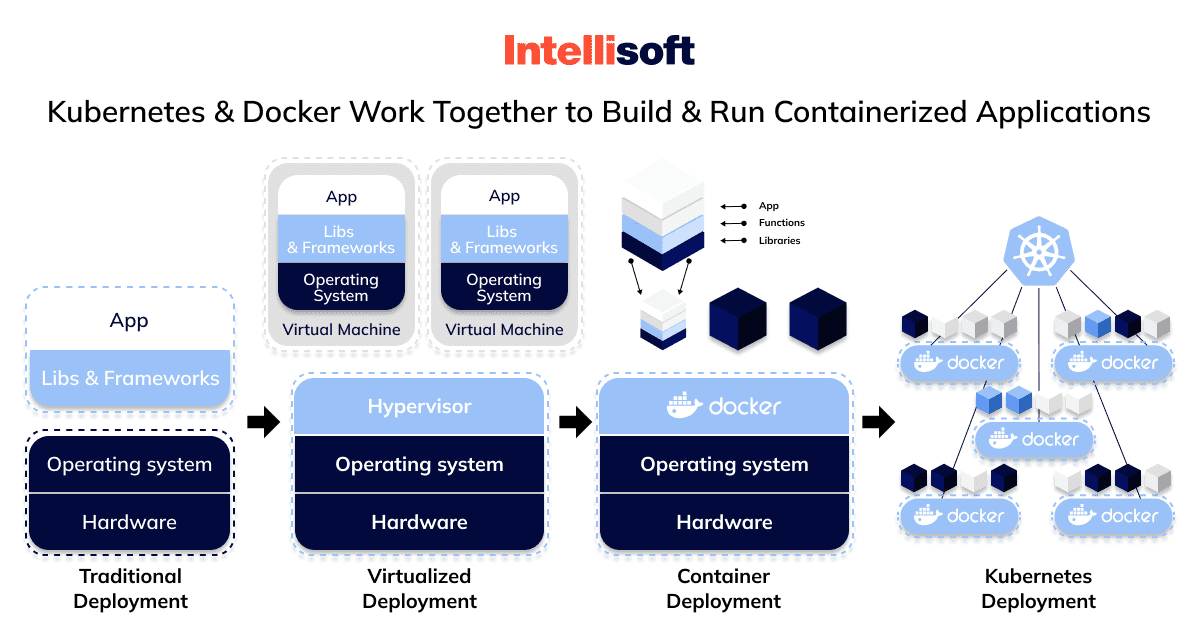
The seamless integration of Docker and Kubernetes elevates the development and management of microservices applications to new heights, enabling teams to capitalize on the unique advantages of each platform and ultimately create more efficient and resilient applications.
Deploying and Managing Microservices with Docker and Kubernetes
The dynamic duo of Docker and Kubernetes streamlines the entire software building process, from development to production, facilitating seamless collaboration and fostering a more agile and efficient workflow. The benefits of using Kubernetes microservices architecture are countless. Let’s look at the critical aspects of deploying and managing microservices using Docker and Kubernetes.
- Containerization with Docker
The first step in the deployment process involves containerizing each microservice using Docker. Developers can create Docker images that encapsulate individual services and their dependencies, configurations, and runtime environment. This approach ensures a consistent, reproducible environment across different development and deployment stages, minimizing the risk of environment-related issues and promoting more reliable applications.
- Cluster Configuration and Deployment with Kubernetes
Once Docker containerizes microservices, Kubernetes takes over the orchestration aspect. By creating a Kubernetes cluster, development teams can distribute the containers across multiple servers or nodes, ensuring optimal resource utilization and high availability. Kubernetes manifests, such as Deployments and Services, facilitate this process which defines the desired state of the application and the communication between microservices.
- Scaling and Load Balancing
As loads of specific services arise, Kubernetes can automatically scale the number of containers running for each microservice, ensuring optimal performance and resource allocation. Load balancing is also managed by Kubernetes, distributing traffic evenly among containers and preventing bottlenecks that could impact the application’s overall performance.
- Rolling Updates and Rollbacks
Docker and Kubernetes make it easier for development teams to implement continuous integration and continuous deployment (CI/CD) practices. With Kubernetes’ rolling updates feature, developers can deploy new versions of microservices without downtime while maintaining the desired application state. In case of issues, Kubernetes provides an easy rollback mechanism, allowing teams to revert to a previous application version with minimal disruption.
- Monitoring and Logging
Integrating Docker and Kubernetes streamlines the monitoring and logging of microservices applications. Kubernetes provides built-in tools and APIs for monitoring the health and performance of containers and clusters, enabling development teams to identify and address issues quickly. Moreover, Kubernetes can be easily integrated with third-party monitoring and logging solutions, providing a comprehensive and customizable view of the application’s performance.
By leveraging the unique capabilities of both platforms, your team can accelerate its workflow, improve resource utilization, and seamlessly adapt to changing user requirements, ultimately delivering a superior user experience.
Comparing Docker to Alternative Containerization Technologies
While Docker is the most popular containerization platform, other options are available, such as Containerd, Podman, and LXD. Each alternative has unique features and advantages, but the benefits of Docker make it stand out due to its widespread adoption, extensive community support, and integration with Kubernetes.
Some of the unique advantages of Docker include the following:
- A simple and intuitive command-line interface makes it easy for developers to create, manage, and deploy containers.
- A vast library of pre-built images is available on Docker Hub, allowing development teams to start quickly and build upon existing solutions.
- Seamless integration with Kubernetes, ensuring that developers can leverage the full power of container orchestration to manage their microservices applications.
While it’s wise to consider the array of containerization technologies available, Docker’s unique combination of user-friendliness, extensive resources, and synergy with Kubernetes confirms its status as the leading choice for development teams seeking to optimize their microservices applications.
Final Thoughts
In conclusion, the world of software development has evolved tremendously, and the advent of microservices, containers, and technologies like Docker and Kubernetes has revolutionized how we build, deploy, and manage applications. The concept of containerization allows developers to package and deliver software with unprecedented efficiency, scalability, and resilience.
Docker has proven itself as the go-to solution for containerization, offering numerous benefits, including:
- Easier deployment
- Enhanced scalability
- Improved isolation
- Accelerated development
- Better productivity
- Greater security
The importance of Docker and containerization in software development will only grow as we look into the future. If you embrace these technologies, you will find yourself well-equipped to tackle the challenges of modern applications, delivering more reliable, scalable, and efficient products than ever before.
If you are ready to leverage the power of Docker and containerization for your projects, consider partnering with IntelliSoft, a leading provider of software development services, including cloud development. Our team has the expertise and experience to help you make the most of these groundbreaking technologies. We are ready to provide seamless development and management of your microservices applications. You can use our calculator to learn more or even estimate your operating costs for the development team.
AboutKosta Mitrofanskiy
I have 25 years of hands-on experience in the IT and software development industry. During this period, I helped 50+ companies to gain a technological edge across different industries. I can help you with dedicated teams, hiring stand-alone developers, developing a product design and MVP for your healthcare, logistics, or IoT projects. If you have questions concerning our cooperation or need an NDA to sign, contact info@intellisoftware.net.
